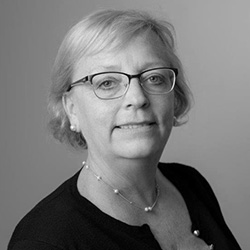News
Renowned Architect Alberto Campo Baeza Inaugurates Dean’s Atelier Studio
June 17, 2021
In spring 2021, the inaugural School of Architecture and Design Tommaso and Franca Chieco Dean’s Atelier Studio hosted world-renowned architect Alberto Campo Baeza as distinguished guest professor. Campo Baeza collaborated with Adjunct Assistant Professor Brad Engelsman in the school’s third-year architectural design studio, where students were engaged in the development of two projects: a “dream house” and a skyscraper in Manhattan where Ludwig Mies van der Rohe’s Seagram Building is located.
In addition to hands-on work and presentations by expert guest lecturers, the students enjoyed theory classes on fundamental subjects that distinguish the poetic work of Campo Baeza: beauty, light, gravity, time, wisdom, and intellectual enjoyment among them. Students learned how their initial ideas can be implemented in a design process that includes relevant understanding of composition, structural elements, materials, construction logics, and building systems.
Preparing Students for The Future
“I called this studio the Dean’s Atelier Studio to promote a special opportunity among our most talented, high-achieving students as an ‘award’ for their academic success, offering them the exposure to a distinguished professional architect,” said Maria Perbelleni, M.Arch., dean of the School of Architecture and Design. “This is not just leveraging our reputation, ranking, and the quality of our design pedagogies, but is also helping with our recruitment and retention efforts while being an exceptional formative experience.”
The Dean’s Atelier Studio is part of a new series of initiatives that includes workshops, professional consultant sessions, lectures, reviews, and experiential learning that prepare students for the complex, fast-changing field of architecture. The program is supported by Domenick Chieco (B.S.A.T. ’89), chair and executive member of the FRIENDS of the School of Architecture and Design, who enthusiastically embraced naming the Dean’s Atelier Studio for his parents. “I think this initiative is absolutely something worth honoring, for both the school and the institution,” notes Chieco. “The work produced in the studio is of the highest quality and will be broadly exhibited and promoted.”
“I think we enjoyed the experience as only one can do through study,” says Campo Baeza, recalling that his father, who was an eminent surgeon and died at the age of 104, was always studying. “As his children, we always saw him studying. That is how I would like to be, and that is how I would like New York Tech students to be. How I would like to be a student now! This was my attempt at it.”
An Impressive Career
Born in Valladolid, Spain, Campo Baeza has been a tenured professor in the School of Architecture of Madrid for more than 50 years, and has taught at a number of prestigious universities in Europe and the United States. He has lectured all over the world, and his work has been extensively exhibited in the United States, Europe, and Asia. He is the recipient of many international awards and recognitions including the Eduardo Torroja Medal, the Award of the Universidad Politécnica de Madrid for his Excellence in Teaching, the Heinrich Tessenow Gold Medal, the Arnold W. Brunner Memorial Prize of the American Academy of Arts and Letters in New York, the International Award Architecture in Stone, the Piranesi Prix, Rome, the 2020 Gold Medal from the Spanish Association of Architecture Institutes, and the 2020 Premio Nacional de Arquitectura. The author of multiple books and publications, his complete body of work can be seen in CAMPO BAEZA Complete Works by Thames & Hudson.
On October 7, 2020, Campo Baeza also participated in the School of Architecture and Design Lecture Series. In his presentation, “Omit Needless Words,” he spoke about his influences and mentors. “If I think about the three legs of a table, I would like to have my table supported by these three legs: T.S. Eliot, considered one of the 20th century’s major poets; the clarity of the Spanish philosopher José Ortega y Gasset; and Alejandro de la Sota, the Spanish architect, with his laconic precision,” he said.
View student works:
“I’ve admired the work of Campo Baeza for a long time, so I was humbled at the opportunity to teach alongside him,” said Engelsman. “His experience and expertise were evident in every studio session. Everyone learned so much through his insightful critique and rare inside access to his extensive body of work. I believe we teach in order to learn, and I gained as much from this semester as the students did.”
Many of Campo Baeza’s colleagues contributed to the success of the program, including architects Alejandro Cervilla and David Vera, and Professor Ignacio Vicens y Hualde, who guest lectured as well as Professor Maria Concepción Pérez Gutierrez, who gave a master class on high-rise building structures.
“It has been an immense honor and pleasure to have Alberto Campo Baeza with us,” Perbellini said. “I am fascinated by a certain form of renunciation that his work seems to demand, and his lectures revealed how architecture can be and is more essential while being more profound at the point that it attains greater universality. In poetry, words move our heart. Alberto’s work is about eliminating the superfluous parts to speak about beauty, time, space, light, air, materiality to express happiness through a space where everything is possible, ‘a piece of heaven on earth.’”
Learning from a Legend
Students in Campo Baeza’s course appreciated his focus on expanding their creative processes beyond their discipline or project at hand. One student, Emily O’Connell, said that “Professor Campo Baeza continued to encourage us to do research and open our minds to new ideas. The knowledge he shared with us exemplified how continuing your studies across different domains proves to be beneficial in life, both in and out of architecture.”
Another student, Muhammad Ali Riaz, concurred: “This semester left a lasting impact on me,” said Riaz. “As I was introduced to different principles of design, my passion for the arts, especially poetry and music, deepened.”
In speaking about the work done by the class, Julia Andor noted that the skyscraper project was especially interesting because it was the most comprehensive project we’ve ever had in a studio. “The valuable guest lecturers that joined the class taught us more about the realism of structure and construction, and we were able to focus on structure and construction as much as design.”
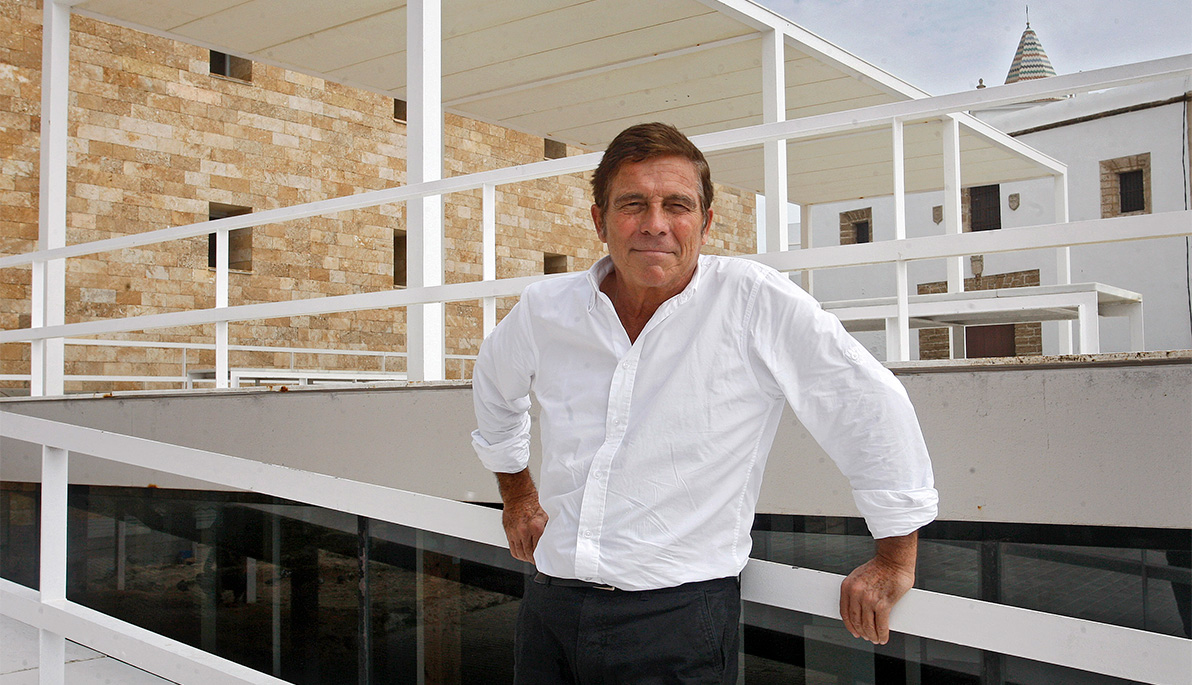

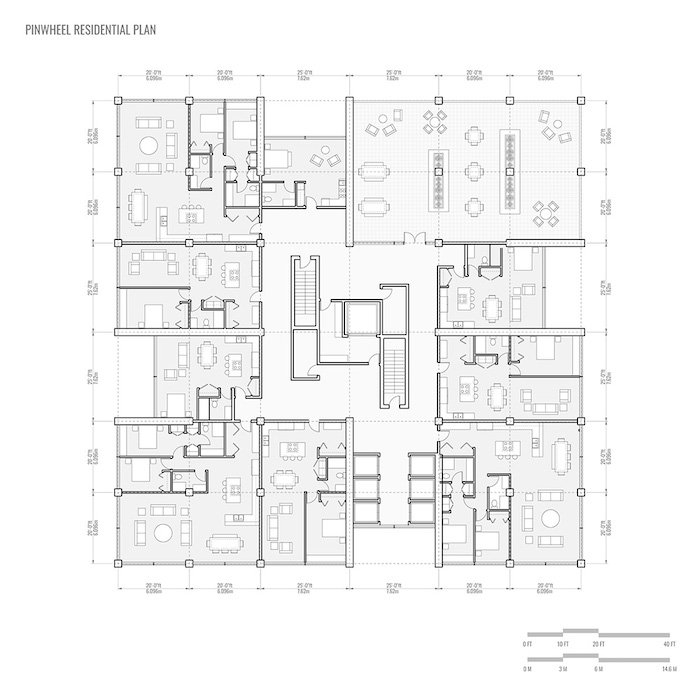
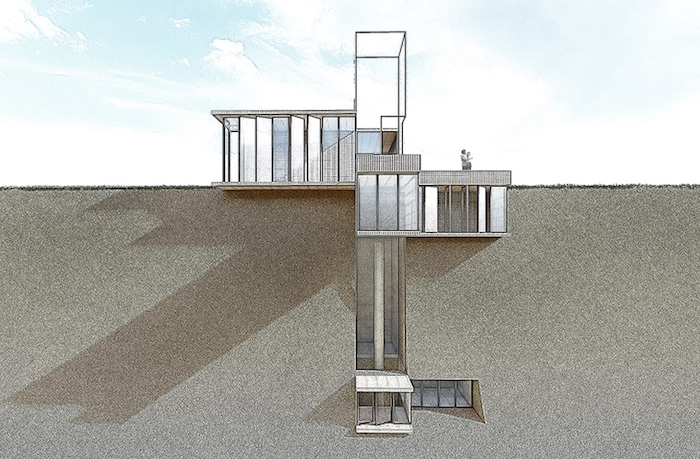
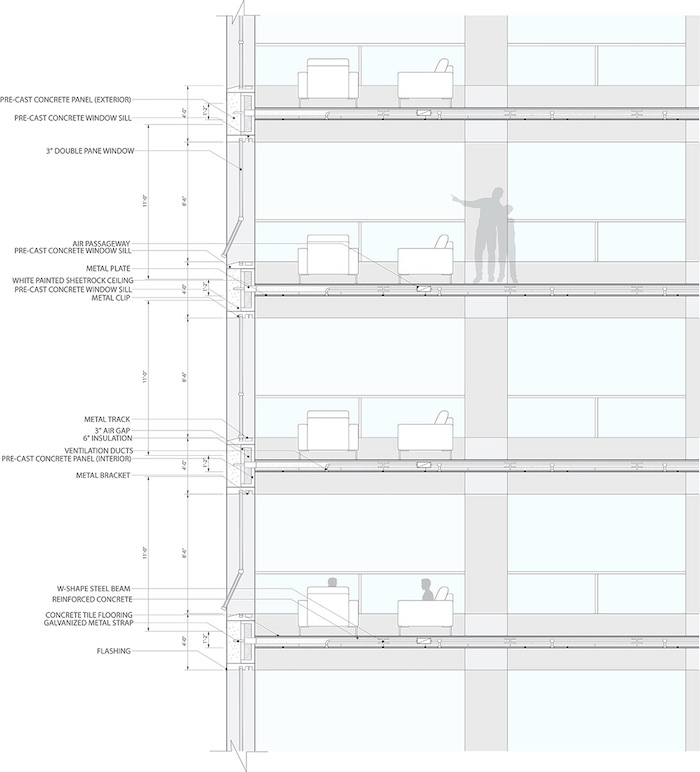
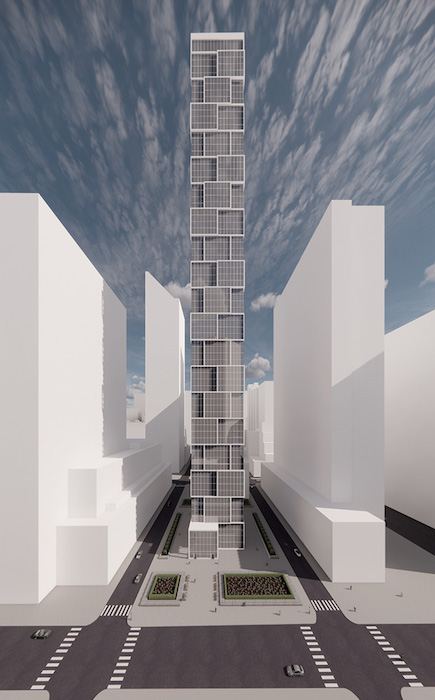
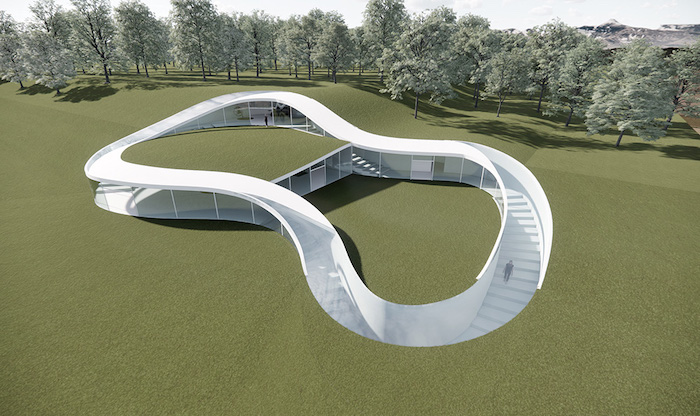
 Open Photo Gallery
Open Photo Gallery